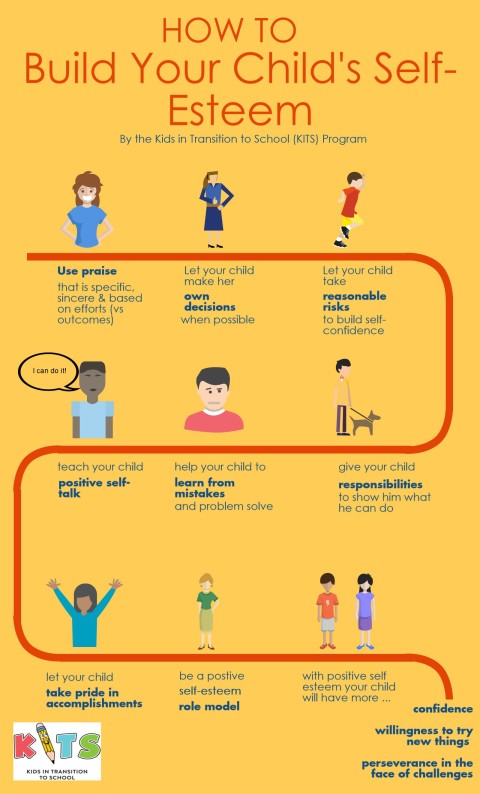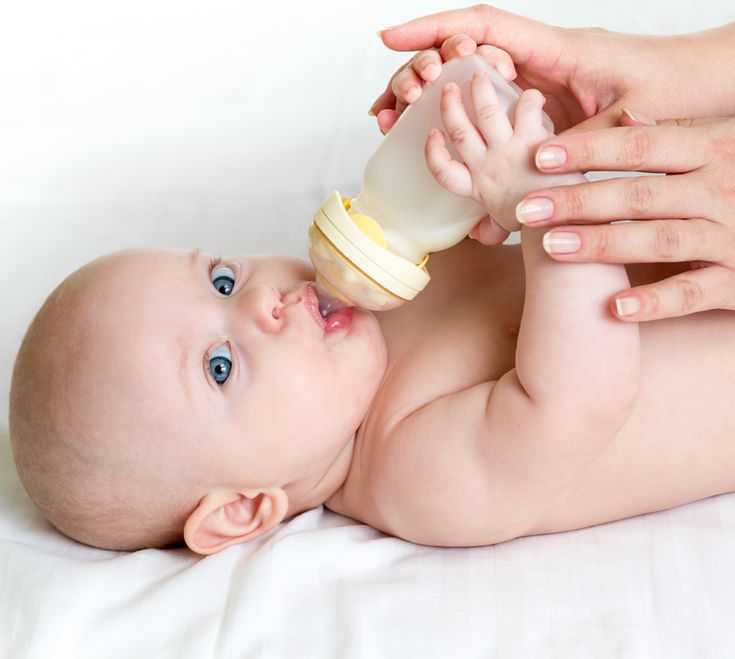Newborn constantly nursing
My Baby Wants to Breastfeed All the Time! Is This Normal?
Frequent Feeds Are Very Common!
In the first few days after birth, it is very common for newborns to feed constantly, probably around 12 or more times per 24 hours. Newborn babies drink very small amounts frequently in the first 1-2 days.
Most newborn babies only drink about a teaspoon (5-7ml) of colostrum at each feed on day one. This is just perfect as their tummy is about the size of a cherry and holds about 7mls at each feed on day one! Perfectly designed!
By day two you start to make a little bit more colostrum at each feed and this gradual increase in milk each day stretches bub’s tummy allowing them to drink more.
Colostrum is a sugary delicious drink but it is not jam-packed with fat at this stage, which means baby needs to keep feeding very often to stay full up.
Remember, every time your baby feeds it helps your breasts build your milk supply in the first month. As your milk increases in volume, from around day 3 onwards, you will notice your baby starts to have longer sleep periods of around 1. 5 – 3 hours mostly.
During the first month, newborn babies need to feed on average 8 – 12 times every 24 hours to ensure they are getting enough milk and that you stimulate the breasts enough to keep building your milk supply. One you have established a good milk supply in the first month you may find that your baby changes their feeding pattern again. Many mums report this happens around 6-8 weeks after birth.
After this first month, research has shown us that babies will breastfeed anywhere from 4-13 times every 24 hours, but most babies still feed on average 10-11 feeds every day.
Each mum and baby’s breastfeeding pattern is different and this is perfectly normal. It is just down to the levels of fat in your milk (and fat levels change throughout the day) and the amount of milk your breast can hold at each feed, as well as how your baby is feeling.
Babies Find Breastfeeding Relaxing
Most babies find breastfeeding very comforting and, just like if we feel upset a hug can do wonders. Likewise, a short extra breastfeed does the same for calming our babies!
Likewise, a short extra breastfeed does the same for calming our babies!
Do not compare yourself with another mum and baby’s feeding pattern. It will most likely be completely different from yours. Trying to “force” your baby into strict routines often brings with it tears and stress for mum and bub!
There are, of course, some mums who say that a routine was the best thing for their baby. But these babies are probably the very small percentage of babies who naturally feed every 4-5 hours and would’ve gotten themselves into a strict schedule anyway!
For most babies, a strict routine does not work! Try and go with the flow, listen to your baby’s cues for when they would like a feed and feed them. Just like us, they will not stick to the same “routine” every day.
I bet you didn’t have the same things to eat, in the same quantity, at the same time, with the same glasses of water, cups of tea or snacks as you have today! So why do we think this is normal for our babies?!
Cluster Feeds Continue After the First Few Days
Most mums report that their baby feeds frequently and is unsettled more so during the evening hours, most commonly between 6 – 10pm. Mums often say that their baby wants to be held constantly and feed “all the time” and that baby cries when put down in their cot.
Mums often say that their baby wants to be held constantly and feed “all the time” and that baby cries when put down in their cot.
This is a very normal and common behaviour for babies who are otherwise content during other parts of the day, feeding and gaining weight well and are generally healthy.
Babies do have these periods of cluster feeding, often most present between 2 and 9 weeks of age, but of course some babies will have these periods for several more weeks and still be totally healthy.
Researchers think it is a developmental stage that all babies naturally need to go through. There are a huge number of processes going on in a baby’s brain in the first year. Babies can easily get overwhelmed or dysregulated in the first few months in particular.
Babies who are overtired or overwhelmed, find it hard to calm down by themselves in the first few months of life and need someone to help them. And what better way to be calmed than having a breastfeed, which of course is not just food, but also a pain reliever and a happy hormone giver!
Also, being held and rocked allows baby to feel safe and warm, like being back in the womb. So, it makes sense that they need to be held and fed so much in the evenings after a big day in the big wide world!
So, it makes sense that they need to be held and fed so much in the evenings after a big day in the big wide world!
Normal Can Still Be Tiring!
Even though this is normal, it doesn’t stop it being exhausting. So, it’s important to note how you are feeling and coping.
Some of us have another person around to help us out, whilst other new mums have to manage alone during the cluster feeds. Regardless of your situation, it is important to realise that cluster feeding is normal.
If you are responding to your baby by holding them and feeding them, yet they are still crying in-between feeds you are not causing harm to your baby, you are still showing them love and they will calm when they are able to.
The other thing to remind yourself is that this is temporary. It is important to not place any demands on yourself during these times. Try preparing dinner at times in the day when baby is sleeping well and just re heat and eat when you can during the cluster breastfeeds!
If you have support, share the holding and rocking of baby with another person to give you a break. If you do not have supports around at that time, listen to your instincts; if you are starting to feel like it is all too much and you feel worried that you are not coping, place your baby safely in their bassinet and walk away to calm down for a few minutes, before coming back to hold baby again.
If you do not have supports around at that time, listen to your instincts; if you are starting to feel like it is all too much and you feel worried that you are not coping, place your baby safely in their bassinet and walk away to calm down for a few minutes, before coming back to hold baby again.
You could also try knocking on the door of your neighbour, who you know and trust, and asking them to hold your baby for 15 mins or so to give you a break.
Most people will understand and, if they have children, they will have gone through the same themselves. Doing this will not harm your baby, but, will give you time to relax a little and recharge.
If you are finding that you are not coping during other parts of the day then it is important to talk with your GP or contact PANDA http://www.panda.org.au/ for some extra help and support.
If you are concerned that your baby’s crying seems abnormal and you are worried if your baby may be unwell. Please get first line advice from these helplines (below). They will be able to give you support and further guidance:
They will be able to give you support and further guidance:
Health Direct helpline (covers all of Australia) 1800 882 436
Maternal and Child Health Nurse 24-hour helpline on 13 22 29 (if you are in the state of Victoria)
Other Things Which Can Help to Relax Babies During Cluster Feeding Times
Skin to skin contact
Having a bath with your baby – only do this if you have another person to help you and baby in and out of the bath and keep you both safe.
“Rocking your pelvis like Elvis” – Whilst holding your baby, try some rocking and swaying moves whilst holding baby either upright, over your arm like superman or in a cradle hold. Each baby will be different in the positions they prefer. You Maternal and Child Health nurse can show you positions for holding and calming babies.
Carrying your baby in a sling. This keeps baby nice and close and creates a womb like environment.
As you rock your baby make a loud “shuuusssshhhh” noise. This is actually calming for babies as it mimics the sounds of being inside the womb.
This is actually calming for babies as it mimics the sounds of being inside the womb.
Try taking 5 deep breaths with your eyes closed before breastfeeding baby to ensure you are relaxed and not tense.
Make sure you get extra sleep in the day time, even if you don’t feel like it make sure you lay down in a darkened, quiet room to rest your body and brain. Over the next few days you’ll soon be drifting off to la la land easily.
Lastly, remember that you cannot spoil a baby by holding them too much. All the information about spoiling babies came out of textbooks written in the early 1900’s!
We have known for years and years that holding and listening to your baby’s needs is the best thing to do, yet we still hear this very bad advice! So listen to your gut instinct and cuddle, love and feed your baby as they need it. This phase will pass and get easier over the next few weeks.
For more information head over to our Medela Australia Facebook page.
Do you ever feel like your baby wants to feed all the time, especially at certain times during the day? Let’s have a chat and support each other!
Frequent nursing • KellyMom.
 com
comImage credit: Jerry Bunkers on flickr
Both of my children seemed to spend the first 6 weeks or so in a constant growth spurt. If your child is doing the same, then hang in there… things almost always start to calm down somewhere between 6 and 8 weeks. With my second I figured that the early weeks would be easier since we already had one child, but I quickly found out that this just isn’t the case. We were still adjusting to a change in family size (and the older child is having to adjust too – not just two adults), and our new baby was having to adjust to life outside of mom. After years of talking to mothers with new babies, I’ve discovered that the first 6-8 weeks with a new baby tends to be a combination of magic, exhaustion, and stress for any family – no matter how many children you have.
Tips for coping with frequent nursing
First of all, do know that frequent nursing is normal and expected in the early months – most newborns need to nurse at least 8 – 12 times per day. Frequent nursing is also needed — to avoid/reduce engorgement in the early days, to nourish and grow a baby who has a stomach the size of his fist but who needs to double his weight within 5-6 months, to establish a good milk supply for mom, and to help a baby who has been cradled close and warm inside mom for 9 months adjust to life in the outside world. Frequent nursing may sometimes be a warning sign of inefficient milk transfer or low milk supply, but if baby has good diaper output, is gaining well and is generally happy and healthy, then the frequent nursing is unlikely to be a sign of a problem.
Frequent nursing is also needed — to avoid/reduce engorgement in the early days, to nourish and grow a baby who has a stomach the size of his fist but who needs to double his weight within 5-6 months, to establish a good milk supply for mom, and to help a baby who has been cradled close and warm inside mom for 9 months adjust to life in the outside world. Frequent nursing may sometimes be a warning sign of inefficient milk transfer or low milk supply, but if baby has good diaper output, is gaining well and is generally happy and healthy, then the frequent nursing is unlikely to be a sign of a problem.
Now infants can get
all their vitamin D
from their mothers’ milk;
no drops needed with
our sponsor's
TheraNatal Lactation Complete
by THERALOGIX. Use PRC code “KELLY” for a special discount!
Remember that nursing is not just about food – it’s also warmth, closeness, reassurance, comfort, healing, love… Nursing has been shown to reduce stress and pain in baby, too. If you’re feeling that baby shouldn’t be hungry again so soon – remember that it’s sometimes Mom that baby needs just as much as the milk.
If you’re feeling that baby shouldn’t be hungry again so soon – remember that it’s sometimes Mom that baby needs just as much as the milk.
Fine-tune breastfeeding
If baby seems to be nursing all the time, you first want to make sure that breastfeeding is working well. Problems with latching can result in frequent nursing if baby is not transferring milk efficiently. If baby’s latch is shallow, it can be like when you’re drinking from a straw and pinch the straw mostly shut – baby is still getting milk but it takes a loooong time at the breast to get enough. Often, even minor changes in latch can help a lot. Here’s more on latching. If you feel that breastfeeding is not working as well as it should, do your best to get some local help – evaluating and fixing latch problems over the phone or online is difficult. Using breast massage and breast compression can also be helpful at times for babies who are frequent nursers.
Adjust your expectations
In the early weeks of breastfeeding, it really helped me to plan my day with the expectation that I would be nursing most of the time.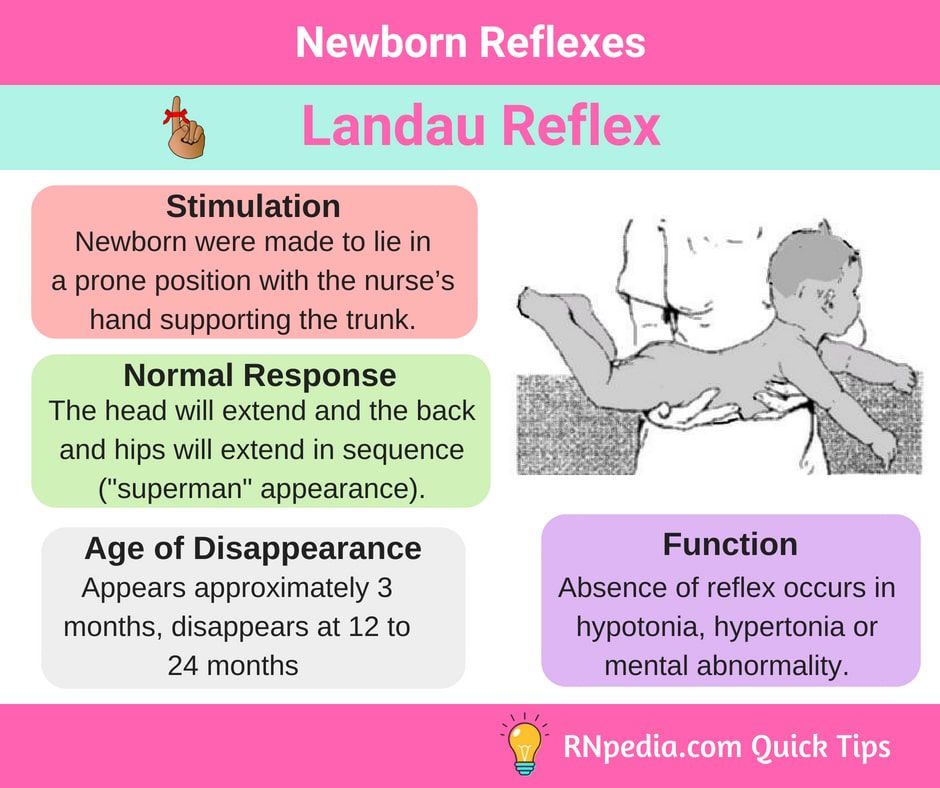 Once I considered frequent nursing to be the norm rather than a problem, it made my life much easier.
Once I considered frequent nursing to be the norm rather than a problem, it made my life much easier.
Many books, magazine articles, friends and other products of our modern culture suggest to us that we will be able to go on with “life as usual” after baby is born – that we can and should “train” baby to conform to an adult routine. But our lives do change greatly with the birth of a new baby, and urging baby to conform to our pre-baby routines can come at great cost to both baby and parents. Routinely delaying nursing when baby cues a need to eat can harm milk supply, affect baby’s weight gain, and is very stressful to both mom and baby. It is developmentally appropriate for young babies to nurse frequently. By letting baby stretch out nursing frequency on his own (and it will happen with time) – you are preserving your nursing relationship and meeting baby’s physical and emotional needs.
The first 6-8 weeks are a time when you are building your milk supply and you and baby are getting used to each other and learning about nursing. After the first 6-12 weeks, most babies are much more settled and move toward a more predictable routine. Nursing sessions do not take as much time, either, as baby becomes more efficient at nursing. Nursing will not always take this much time – soon nursing will be much quicker and easier, and you will have gotten past “boot camp” to the easy phase of nursing.
After the first 6-12 weeks, most babies are much more settled and move toward a more predictable routine. Nursing sessions do not take as much time, either, as baby becomes more efficient at nursing. Nursing will not always take this much time – soon nursing will be much quicker and easier, and you will have gotten past “boot camp” to the easy phase of nursing.
Set priorities
Will the dishes be unhappy and depressed if you neglect them for a few months? You’re growing and building a relationship with your children – the dishes and housework can wait when your child needs time and attention.
Make a list of the things you’d like to get done each week, and prioritize them. For the things that absolutely need to get done, see if you can find shortcuts and/or someone else who can do the job. In the early weeks, if a friend or family member asks if they can help, take them up on it – see if someone can put a load of clothes on, or wash the dishes, or vacuum the floor while you nurse baby.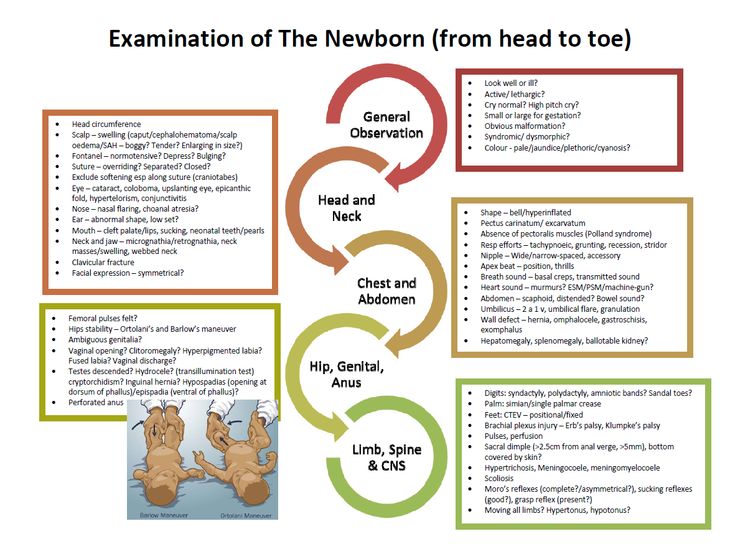 Some families decide that it’s worth the money to get a cleaning service to come in every couple of weeks to do the heavy cleaning. Can an older neighborhood child or a friend come over to entertain your older children while you nap with baby? Can Dad make sandwiches or cut up vegetables/fruit so you have food easily available when baby is nursing often? Be creative, and don’t be afraid to let the smaller things slide. You’ll have plenty of time for them later – the “in arms” phase of baby’s life is so short, even though it might feel like forever when you’re in the middle of it.
Some families decide that it’s worth the money to get a cleaning service to come in every couple of weeks to do the heavy cleaning. Can an older neighborhood child or a friend come over to entertain your older children while you nap with baby? Can Dad make sandwiches or cut up vegetables/fruit so you have food easily available when baby is nursing often? Be creative, and don’t be afraid to let the smaller things slide. You’ll have plenty of time for them later – the “in arms” phase of baby’s life is so short, even though it might feel like forever when you’re in the middle of it.
Be prepared
Put together a collection of items that you might need while you’re nursing. If you usually nurse in one particular place, you might set up a nursing area there, or if you move around you can keep your collection in a basket or other container with a handle. Some things you might want:
- a few diapers & wipes
- extra cloth diapers or burp rags
- water bottle
- snacks
- books
- any remote controls you might want to use
- cordless phone (or make sure your answering machine is turned on)
Do you have a baby carrier? Are you comfortable with using it and nursing baby in it? A carrier will give you an extra hand (sometimes two) and allow you to keep nursing or holding baby while walking around doing other things..jpg)
Maximize sleep
Nap when baby naps. You’ve probably heard it a million times, but we say it because it helps! When baby goes to sleep, don’t jump up to do housework – lie down and rest and try to go to sleep. If you can’t sleep, then read a book, listen to music, watch a movie… but don’t run around the house. If you get some sleep now, you’ll have more energy to do what you need to do later.
Consider sleeping with or nearby baby so you can get more sleep. Co-sleeping (for naps, and/or during the night) is a lifesaver for many nursing moms. The closer you are to your baby, the less your sleep will be interrupted for night waking. Here are some tips on side lying nursing, and information on safely sleeping with your baby. Getting more rest can make life with baby much easier.
Do you feel trapped at home?
Many new moms feel like they’re trapped at home with a frequently nursing baby, but most young babies are incredibly easy to take out and about. It can really help to get out occasionally. Here are some tips for going out:
It can really help to get out occasionally. Here are some tips for going out:
- Get a baby carrier . With a carrier (and a little practice) you can nurse your baby while you walk around the park or the mall.
- Put baby in a baby carrier or a stroller, and go for a walk.
- Go to a movie. Most young babies simply sleep and nurse through movies. And if you’re nervous about nursing in public, a dark movie theater can be a good place to start. Go here for commentary and tips on nursing in public.
- If you want to go out by yourself for a bit, you don’t have to leave a bottle. If your baby normally goes an hour or two between nursing sessions, then nurse baby right before you leave and plan to be back before the next nursing session. If you have a cell phone, take it with you so Dad or another caregiver can call you if the going gets rough. Even if you can only expect 20-30 minutes between nursings, go for a walk by yourself while someone watches baby. Every little bit helps, when you’re feeling “touched out.
 ”.
”.
Additional Resources
- Nursing your newborn — what to expect in the early weeks
- Growth Spurts
- Cluster Feeding and Fussy Evenings
- Nursing to sleep and other comfort nursing
- I’m worried about spoiling my baby
- What should I know about giving my breastfed baby a pacifier?
- My baby is fussy! Is something wrong?
- My baby fusses or cries during nursing – what’s the problem?
- Should baby be on a schedule?
Additional Resources at other websites
Is baby nursing too often?
- Will I Spoil My Baby by Holding/Nursing Him So Often? FAQ from LLL
Frequent Nursing (in general)
So I Nursed Him Every 45 Minutes. Every new mom should read this article!
Touch Hunger by Linda J. Smith, IBCLC. Do you have a baby who doesn’t want to be put down? Read this!
The Human Pacifier by Lu Hanessian, from New Beginnings, Vol. 19 No. 1, January-February 2002, p. 14.
14.
Babies Who Get More Cuddles Have Their Genetics Changed For Years at sciencealert.com
The Science of Mother Love: Is Science Catching Up to Mother’s Wisdom? by Cori Young
Breastfeeding in the first month: what to expect
Not sure how to establish lactation and increase milk production? If you need help, support, or just want to know what to expect, read our first month breastfeeding advice
Share this information
The first weeks of breastfeeding are a very stressful period. If at times you feel like you can't handle it, know that you are not alone. Feeding your baby all day long is completely natural and helps produce breast milk, but can be quite tiring at times. Be patient, think about yourself and remember: after the first month, when milk production stabilizes, it will become easier.
How often should a baby be breastfed?
Babies are born with a small stomach that grows rapidly with increasing milk production: in the first week it is no larger than an apricot, and after two weeks it is already the size of a large chicken egg.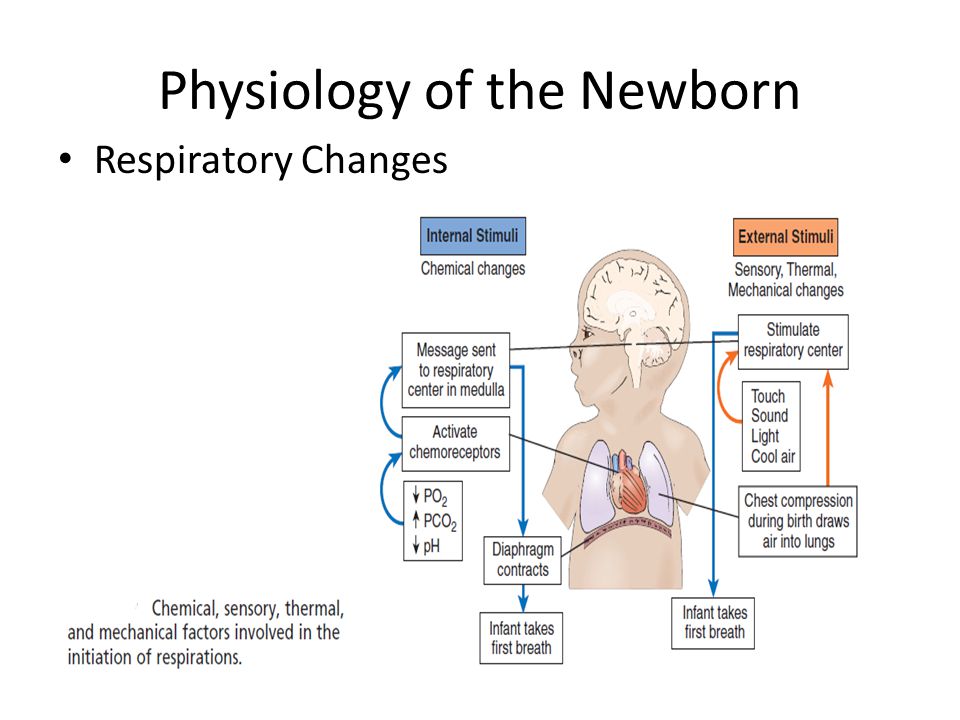 1.2 Let the child eat as much as he wants and when he wants. This will help him quickly regain the weight lost after birth and grow and develop further.
1.2 Let the child eat as much as he wants and when he wants. This will help him quickly regain the weight lost after birth and grow and develop further.
“Be prepared to feed every two to three hours throughout the day. At night, the intervals between feedings can be longer: three to four or even five hours, says Cathy Garbin, a recognized international expert on breastfeeding. Some eat quickly and are satiated in 15 minutes, while others take an entire hour to feed. Do not compare your breastfeeding regimen with that of other mothers - it is very likely that there will be nothing in common between them.
At each feed, give your baby a full meal from one breast and then offer a second one, but don't worry if the baby doesn't take it. When the baby is full, he lets go of his chest and at the same time looks relaxed and satisfied - so much so that he can immediately fall asleep. The next time you feed, start on the other breast. You can monitor the order of the mammary glands during feeding using a special application.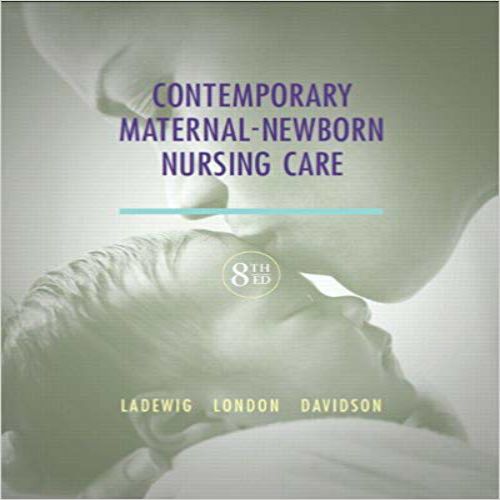
Why does the child always ask for a breast?
The first month is usually the hardest time to breastfeed. But do not think that because the baby is constantly hungry and asks for a breast almost every 45 minutes, then you do not have enough milk.
In the first month, the baby needs to eat frequently to start and stimulate the mother's milk production. It lays the foundation for a stable milk supply in the future. 3
In addition, we must not forget that the child needs almost constant contact with the mother. The bright light and noise of the surrounding world at first frighten the baby, and only by clinging to his mother, he can calm down.
Sarah, mother of three from the UK, confirms: “Crying is not always a sign of hunger. Sometimes my kids just wanted me to be around and begged for breasts to calm them down. Use a sling. Place the cradle next to the bed. Don't look at the clock. Take advantage of every opportunity to relax. Forget about cleaning. Let those around you take care of you. And not three days, but six weeks at least! Hug your baby, enjoy the comfort - and trust your body."
Let those around you take care of you. And not three days, but six weeks at least! Hug your baby, enjoy the comfort - and trust your body."
Do I need to feed my baby on a schedule?
Your baby is still too young for a strict daily routine, so
forget about breastfeeding schedules and focus on his needs.
“Volumes have been written about how to feed a baby on a schedule, but babies don't read or understand books,” Cathy says. - All children are different. Some people can eat on a schedule, but most can't. Most often, over time, the child develops his own schedule.
Some mothers report that their babies are fine with scheduled feedings, but they are most likely just the few babies who would eat every four hours anyway. Adults rarely eat and drink the same foods at the same time of day - so why do we expect this from toddlers?
Offer your baby the breast at the first sign of hunger. Crying is already the last stage, so be attentive to early signs: the baby licks his lips, opens his mouth, sucks his fist, turns his head with his mouth open - looking for the breast.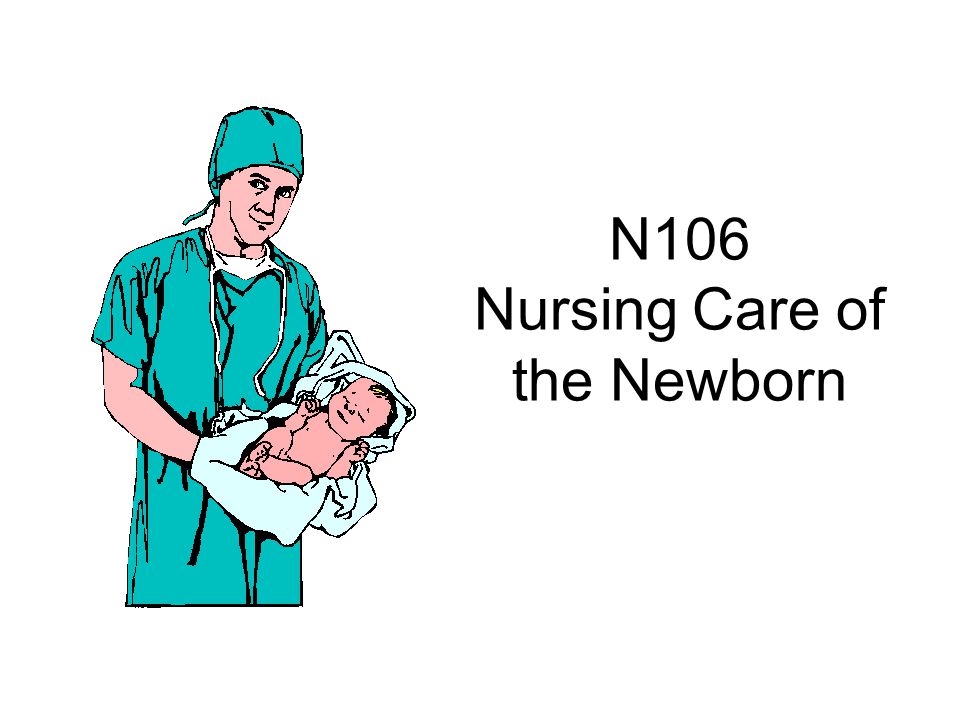 4
4
What is a "milk flush"?
At the beginning of each feed, a hungry baby actively sucks on the nipple,
thereby stimulating the milk flow reflex - the movement of milk through the milk ducts. 5
“Nipple stimulation triggers the release of the hormone oxytocin,” explains Cathy. “Oxytocin is distributed throughout the body and causes the muscles around the milk-producing glands to contract and the milk ducts to dilate. This stimulates the flow of milk.
If the flushing reflex fails, milk will not come out. This is a hormonal response, and under stress it may not work at all or work poorly. Therefore, it is so important that you feel comfortable and calm when feeding.
“Studies show that each mother has a different rhythm of hot flashes during one feeding,” Katie continues, “Oxytocin is a short-acting hormone, it breaks down in just 30-40 seconds after formation. Milk begins to flow, the baby eats, the effect of oxytocin ends, but then a new rush of milk occurs, the baby continues to suck on the breast, and this process is repeated cyclically. That is why, during feeding, the child periodically stops and rests - this is how nature intended.
That is why, during feeding, the child periodically stops and rests - this is how nature intended.
The flow of milk may be accompanied by a strong sensation of movement or tingling in the chest, although 21% of mothers, according to surveys, do not feel anything at all. 5 Cathy explains: “Many women only feel the first rush of milk. If you do not feel hot flashes, do not worry: since the child eats normally, most likely, you simply do not understand that they are.
How do you know if a baby is getting enough milk?
Since it is impossible to track how much milk a baby eats while breastfeeding, mothers sometimes worry that the baby is malnourished. Trust your child and your body.
After a rush of milk, the baby usually begins to suckle more slowly. Some mothers clearly hear how the baby swallows, others do not notice it. But one way or another, the child himself will show when he is full - just watch carefully. Many babies make two or three approaches to the breast at one feeding. 6
6
“When a child has had enough, it is noticeable almost immediately: a kind of “milk intoxication” sets in. The baby is relaxed and makes it clear with his whole body that he is completely full, says Katie, “Diapers are another great way to assess whether the baby is getting enough milk. During this period, a breastfed baby should have at least five wet diapers a day and at least two portions of soft yellow stool, and often more.”
From one month until weaning at six months of age, a baby's stool (if exclusively breastfed) should look the same every day: yellow, grainy, loose, and watery.
When is the child's birth weight restored?
Most newborns lose weight in the first few days of life. This is normal and should not be cause for concern. As a rule, weight is reduced by 5-7%, although some may lose up to 10%. One way or another, by 10–14 days, almost all newborns regain their birth weight. In the first three to four months, the minimum expected weight gain is an average of 150 grams per week. But one week the child may gain weight faster, and the next slower, so it is necessary that the attending physician monitor the health and growth of the baby constantly. 7.8
But one week the child may gain weight faster, and the next slower, so it is necessary that the attending physician monitor the health and growth of the baby constantly. 7.8
At the slightest doubt or signs of dehydration, such as
dark urine, no stool for more than 24 hours, retraction of the fontanel (soft spot on the head), yellowing of the skin, drowsiness, lethargy, lack of appetite (ability to four to six hours without feeding), you should immediately consult a doctor. 7
What is "cluster feeding"?
When a baby asks to breastfeed very often for several hours, this is called cluster feeding. 6 The peak often occurs in the evening between 18:00 and 22:00, just when many babies are especially restless and need close contact with their mother. Most often, mothers complain about this in the period from two to nine weeks after childbirth. This is perfectly normal and common behavior as long as the baby is otherwise healthy, eating well, gaining weight normally, and appears content throughout the day.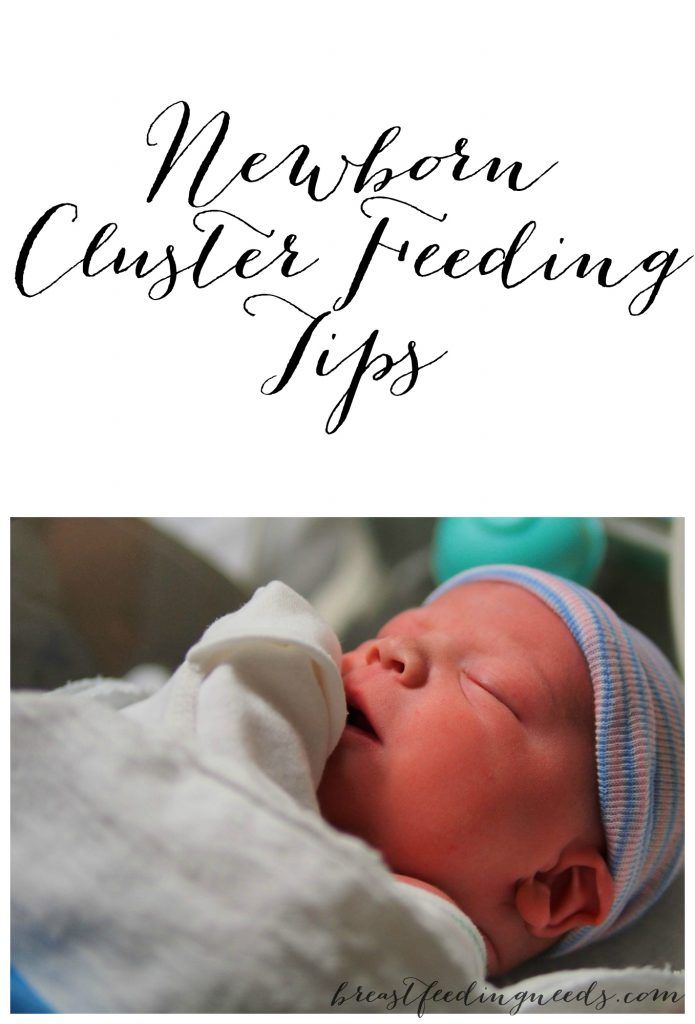 9
9
Cluster feeding can be caused by a sharp jump in the development of the body - during this period the baby especially needs love, comfort and a sense of security. The growing brain of a child is so excited that it can be difficult for him to turn off, or it just scares the baby. 9 If a child is overworked, it is often difficult for him or her to calm down on his own, and adult help is needed. And breastfeeding is the best way to calm the baby, because breast milk is not only food, but also pain reliever and a source of happiness hormones. 10
“Nobody told me about cluster feeding, so for the first 10 days I just went crazy with worry - I was sure that my milk was not enough for the baby,” recalls Camille, a mother from Australia, “It was a very difficult period . I was advised to pump and supplement until I finally contacted the Australian Breastfeeding Association. There they explained to me what was happening: it turned out that it was not about milk at all.
Remember, this is temporary. Try to prepare dinner for yourself in the afternoon, when the baby is fast asleep, so that in the evening, when he begins to often breastfeed, you have the opportunity to quickly warm up the food and have a snack. If you are not alone, arrange to carry and rock the baby in turns so that you have the opportunity to rest. If you have no one to turn to for help and you feel that your strength is leaving you, put the baby in the crib and rest for a few minutes, and then pick it up again.
Ask your partner, family and friends to help you with household chores, cooking and caring for older children if you have any. If possible, hire an au pair. Get as much rest as possible, eat well, and drink plenty of water.
“My daughter slept a lot during the day, but from 23:00 to 5:00 the cluster feeding period began, which was very tiring,” recalls Jenal, a mother from the USA, “My husband tried his best to make life easier for me — he washed, cleaned, cooked, changed diapers, let me sleep at every opportunity and never tired of assuring me that we were doing well.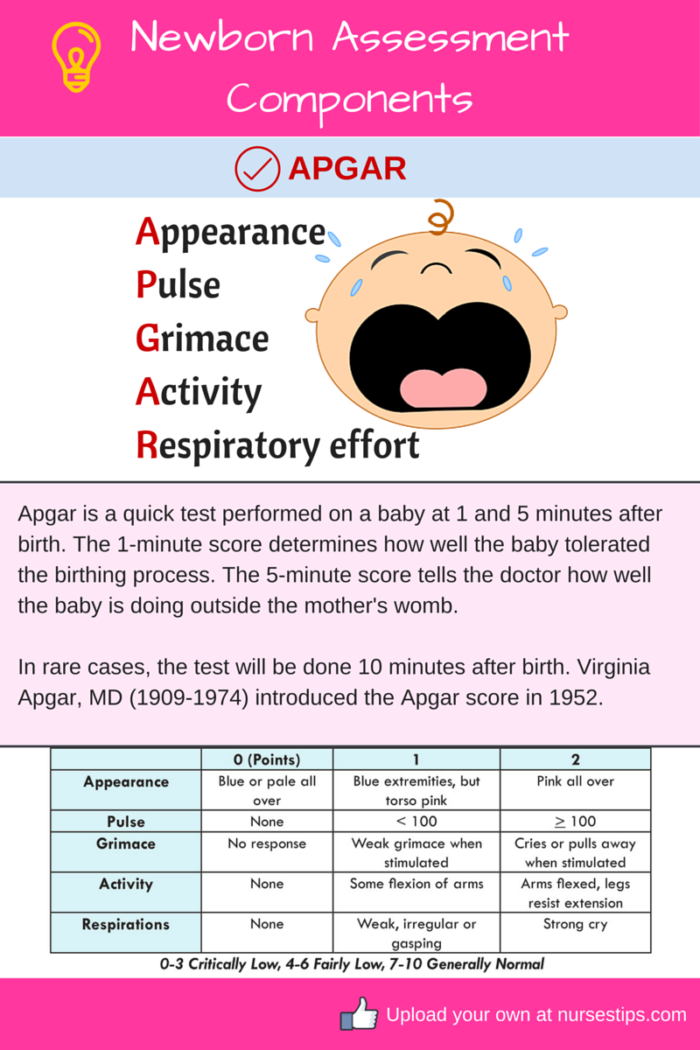 ”
”
If you are concerned about the frequency of breastfeeding, it is worth contacting a specialist. “Check with a lactation consultant or doctor to see if this is indicative of any problems,” recommends Cathy. “Resist the temptation to supplement your baby with formula (unless recommended by your doctor) until you find the cause. It may not be a matter of limited milk production at all - it may be that the child is inefficiently sucking it.
When will breastfeeding become easier?
This early stage is very special and does not last long. Although sometimes it seems that there will be no end to it, rest assured: it will get easier soon! By the end of the first month, breast milk production will stabilize, and the baby will become stronger and learn to suck better at the breast. 2.3 Any problems with latch on by this time will most likely be resolved and the body will be able to produce milk more efficiently so inflammation and leakage of milk will start to subside.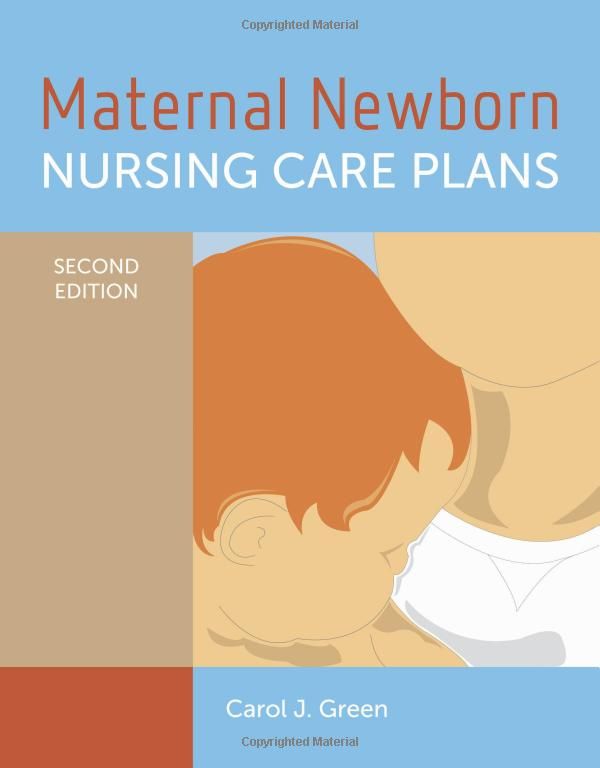
“The first four to six weeks are the hardest, but then things start to get better,” Cathy assures. It just needs to be experienced!”
The longer breastfeeding continues, the more benefits it brings, from saving on formula and improving sleep quality 11–13 to boosting your baby's immune system 14 and reducing your risk of certain cancers. 15
“When you feel like you're pushing yourself, try to go from feed to feed and day to day,” says Hannah, a UK mom. “I was sure I wouldn’t make it to eight weeks. And now I have been breastfeeding for almost 17 weeks, and I dare say it is very easy.”
Read the resource Breastfeeding Beyond the First Month: What to Expect
Literature
1 Naveed M et al. An autopsy study of relationship between perinatal stomach capacity and birth weight. Indian J Gastroenterol .1992;11(4):156-158. - Navid M. et al. , Association between prenatal gastric volume and birth weight. Autopsy. Indian J Gastroenterol. 1992;11(4):156-158.
, Association between prenatal gastric volume and birth weight. Autopsy. Indian J Gastroenterol. 1992;11(4):156-158.
2 Neville MC et al. Studies in human lactation: milk volumes in lactating women during the onset of lactation and full lactation . Am J Clinl Nutr . 1988;48(6):1375-1386. at the beginning and at the peak of lactation." Am F Clean Nutr. 1988;48(6):1375-1386.
3 Kent JC et al. Principles for maintaining or increasing breast milk production. J Obstet , Gynecol , & Neonatal Nurs . 2012;41(1):114-121. - Kent J.S. et al., "Principles for Maintaining and Increasing Milk Production". J Obstet Ginecol Neoneutal Nurs. 2012;41(1):114-121.
4 Australian Breastfeeding Feeding cues ; 2017 Sep [ cited 2018 Feb ]. - Australian Breastfeeding Association [Internet], Feed Ready Signals; September 2017 [cited February 2018]
- Australian Breastfeeding Association [Internet], Feed Ready Signals; September 2017 [cited February 2018]
5 Kent JC et al. Response of breasts to different stimulation patterns of an electric breast pump. J Human Lact . 2003;19(2):179-186. — Kent J.S. et al., Breast Response to Different Types of Electric Breast Pump Stimulation. J Human Lact (Journal of the International Association of Lactation Consultants). 2003;19(2):179-186.
6) Kent JC et al . Volume and frequency of breastfeedings and fat content of breast milk throughout the day. Pediatrics. 2006;117(3): e 387-395. - Kent J.S. et al., "Amount and frequency of breastfeeding and fat content of breast milk during the day." Pediatrix (Pediatrics). 2006;117(3):e387-95.
7 Lawrence RA, Lawrence RM. Breastfeeding: A guide for the medical profession. 7th ed. Maryland Heights MO, USA: Elsevier Mosby; 2010. 1128 p . - Lawrence R.A., Lawrence R.M., "Breastfeeding: A guide for healthcare professionals." Seventh edition. Publisher Maryland Heights , Missouri, USA: Elsevier Mosby; 2010. P. 1128.
Breastfeeding: A guide for the medical profession. 7th ed. Maryland Heights MO, USA: Elsevier Mosby; 2010. 1128 p . - Lawrence R.A., Lawrence R.M., "Breastfeeding: A guide for healthcare professionals." Seventh edition. Publisher Maryland Heights , Missouri, USA: Elsevier Mosby; 2010. P. 1128.
8 World Health Organization. [Internet]. Child growth standards; 2018 [cited 2018 Feb] - World Health Organization. [Internet]. Child Growth Standards 2018 [cited February 2018].
9 Australian Breastfeeding Association . [ Internet ]. Cluster feeding and fussing babies ; Dec 2017 [ cited 2018 Feb ] - Australian Breastfeeding Association [Internet], Cluster Feeding and Screaming Babies; December 2017 [cited February 2018].
10 Moberg KU, Prime DK. Oxytocin effects in mothers and infants during breastfeeding. Infant . 2013;9(6):201-206.- Moberg K, Prime DK, "Oxytocin effects on mother and child during breastfeeding". Infant. 2013;9(6):201-206.
11 U.S. Department of Health & Human Services [Internet]. Surgeon General Breastfeeding factsheet; 2011 Jan 20 [cited 2017 Feb] - Department of Health and Human Services [Internet], "Breastfeeding Facts from the Chief Medical Officer", Jan 20, 2011 [cited Feb 2017]
12 Kendall-Tackett K et al. The effect of feeding method on sleep duration, maternal well-being, and postpartum depression. clinical lactation. 2011;1;2(2):22-26. - Kendall-Tuckett, K. et al., "Influence of feeding pattern on sleep duration, maternal well-being and the development of postpartum depression." Clinical Lactation. 2011;2(2):22-26.
13 Brown A, Harries V.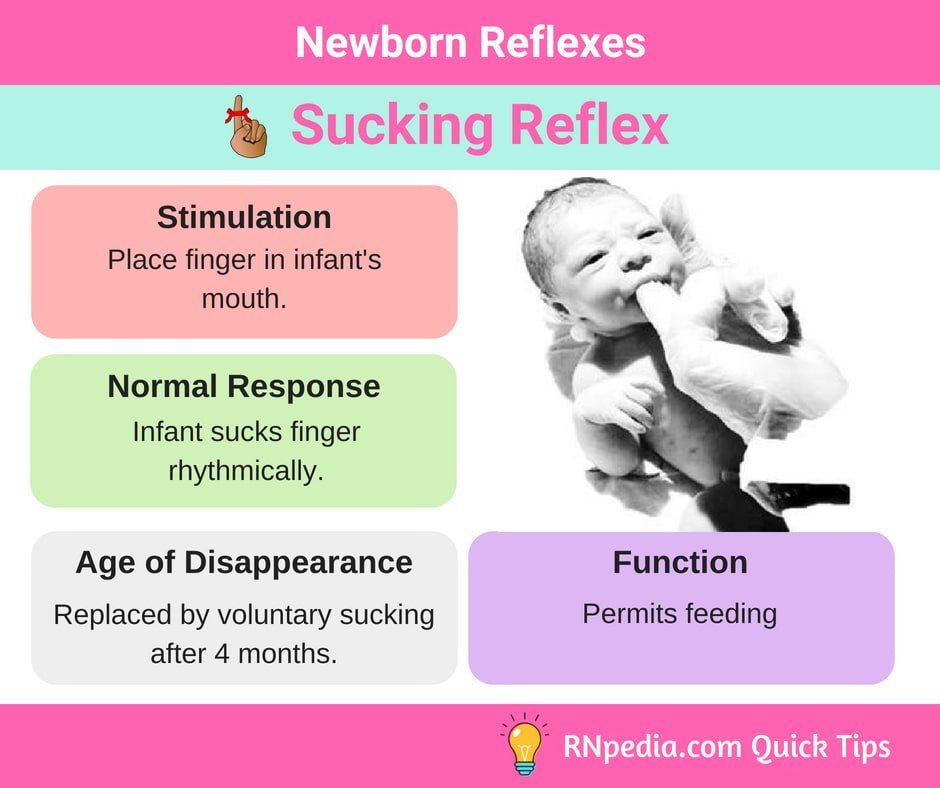 Infant sleep and night feeding patterns during later infancy: Association with breastfeeding frequency, daytime complementary food intake, and infant weight. Breast Med . 2015;10(5):246-252. - Brown A., Harris W., "Night feedings and infant sleep in the first year of life and their association with feeding frequency, daytime supplementation, and infant weight." Brest Med (Breastfeeding Medicine). 2015;10(5):246-252.
Infant sleep and night feeding patterns during later infancy: Association with breastfeeding frequency, daytime complementary food intake, and infant weight. Breast Med . 2015;10(5):246-252. - Brown A., Harris W., "Night feedings and infant sleep in the first year of life and their association with feeding frequency, daytime supplementation, and infant weight." Brest Med (Breastfeeding Medicine). 2015;10(5):246-252.
14 Hassiotou F et al. Maternal and infant infections stimulate a rapid leukocyte response in breastmilk. Clin Transl immunology. 2013;2(4). - Hassiot F. et al., "Infectious diseases of the mother and child stimulate a rapid leukocyte reaction in breast milk." Clean Transl Immunology. 2013;2(4):e3.
15 Li DP et al. Breastfeeding and ovarian cancer risk: a systematic review and meta-analysis of 40 epidemiological studies. Asian Pac J Cancer Prev . 2014;15(12):4829-4837. - Lee D.P. et al., "Breastfeeding and the risk of ovarian cancer: a systematic review and meta-analysis of 40 epidemiological studies." Asia Pas J Cancer Prev. 2014;15(12):4829-4837.
2014;15(12):4829-4837. - Lee D.P. et al., "Breastfeeding and the risk of ovarian cancer: a systematic review and meta-analysis of 40 epidemiological studies." Asia Pas J Cancer Prev. 2014;15(12):4829-4837.
Breastfeeding principles | State Budgetary Health Institution "City Polyclinic No. 3"
Principles of breastfeeding
Basic principles of successful breastfeeding:
1. Strictly adhere to the established rules of breastfeeding and regularly bring these rules to the attention of medical personnel and puerperas.
2. Train medical personnel in the necessary skills for the practice of breastfeeding.
3. Inform all pregnant women about the benefits and techniques of breastfeeding.
4. Help mothers initiate breastfeeding within the first half hour after delivery.
5. Show mothers how to breastfeed and how to maintain lactation, even if they are temporarily separated from their children.
6. Give newborns no food or drink other than breast milk, unless medically indicated.
7. Practice having the mother and newborn side by side in the same room 24 hours a day.
8. Encourage breastfeeding on demand rather than on a schedule.
9. Do not give breastfeeding newborns any sedatives or devices that mimic the mother's breast (nipples, pacifiers).
Encourage the establishment of a breastfeeding support group and refer mothers to these groups after discharge from the maternity hospital.
A few years ago, mother and child were separated everywhere (and in some places even now). The preservation of the old methodology is due to the special condition of the woman or child, but more often it is impossible to redevelop the large premises of the old maternity hospitals. Some women are fine with this.
Features and disadvantages of separate stay of mother and child are as follows: women are in large postpartum wards, usually 6-8 people. Children are in children's large wards for 10-20 or more. Children are brought to the postpartum wards of mothers 6 times a day (the first feeding at 6 am, the last - at 24 pm). Before feeding, all women are instructed to prepare for it (wash their hands, prepare their breasts, put on a scarf, mask, prepare a special diaper for feeding). Feeding is given for half an hour every 3.5 hours.
Before feeding, all women are instructed to prepare for it (wash their hands, prepare their breasts, put on a scarf, mask, prepare a special diaper for feeding). Feeding is given for half an hour every 3.5 hours.
In the old days, it was prescribed to feed alternately with one breast, and after feeding, to express the rest of the milk that the dairy sister collected.
Before the night interval, both breasts were supposed to be pumped. The disadvantage of this method is, first of all, multiple contacts between women and children, which can contribute to the spread of a hospital infection. With this artificial regimen, many children do not breastfeed and sleep during feeding. Therefore, then you have to supplement them in the children's department, and women constantly express their breasts.
Individual regimen absolutely excludes such complications. The child eats, when he wants, the natural milk of his mother, who does not need to injure the breast with unnecessary pumping. In addition, the night gap leads to lactostasis and creates the risk of mastitis. For short meetings with a child, a woman does not have time to develop the skill of caring for and monitoring a child. Even if a woman is allowed to visit the nursery for feeding in a more individual way, almost all problems remain. A woman worries about a child torn from her, does not have the opportunity to caress and care for him.
In addition, the night gap leads to lactostasis and creates the risk of mastitis. For short meetings with a child, a woman does not have time to develop the skill of caring for and monitoring a child. Even if a woman is allowed to visit the nursery for feeding in a more individual way, almost all problems remain. A woman worries about a child torn from her, does not have the opportunity to caress and care for him.
For many years, women fought for their natural right to care for a child and not part with him immediately after birth.
True, the old method had some advantages: the ability to ventilate the room well, carry out cleaning, ultraviolet irradiation of both mothers' and children's wards.
When separated, a woman has the opportunity to take a break from the child, so some women insist on a separate stay. This most likely indicates a woman's unpreparedness for the postpartum period and for motherhood in general. The reason for such a desire may be a lack of understanding of the importance of maternal care, a free feeding regimen, a lack of antenatal clinics, a woman’s poor health, a woman’s pronounced egocentrism, insufficient help and support for the puerperal from the staff of the postpartum department.
The advantages of breastfeeding when the mother and fetus are together are:
• Constant close contact between mother and child, the child hears the familiar heartbeat of the mother, feels her warmth and caress, hears her voice, which brings them even closer and contributes to the greater comfort of the child.
• Individualized care is necessary because each person, including newborns, has their own individual life cycles and needs. Some children, who are stronger, in the case when the mother has a lot of milk, also breastfeed 6 times a day at long intervals. Weaker children, especially if the mother has little milk, are applied to the breast 10 or more times, sucking out less milk at a time, but the same volume per day, besides contributing to the stimulation of lactation.
• Free-form breastfeeding stimulates lactation and promotes optimal milk production.
• Eliminates the need for constant pumping.
• Reduces the risk of lactostasis and mastitis.
• Reduces the risk of nosocomial infection.
• The activity of the mother in childbirth, necessary for restoring health, is increased.
• A woman is present when a newborn is examined by a doctor, fully controls and takes part in all manipulations performed on a newborn.
• A woman in the process of caring for a child is trained in proper care methods under the supervision of staff and is ready for self-care at home.
The woman can breastfeed lying on the side of the baby (usually with stitches in the perineum), the baby can be placed on top, the baby can be seated or standing, choosing the positions that are most comfortable for the baby and the mother. The child must grab the nipple correctly so that the milk passages are not pinched, neighboring tissues are not injured, the nose is not covered (hold the breast with your hand). Both with a small and with a large amount of milk, it is better to apply to two mammary glands in turn, this contributes to the regulation of milk production. There is no need to express unnecessarily.






